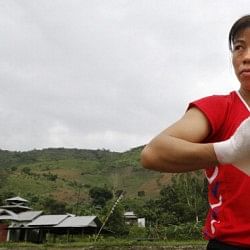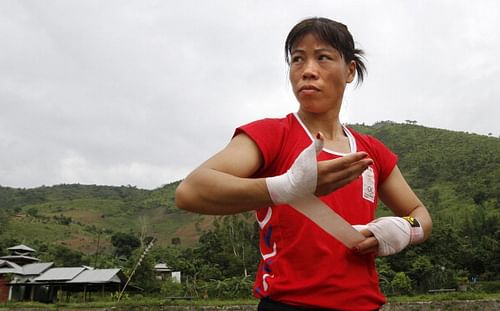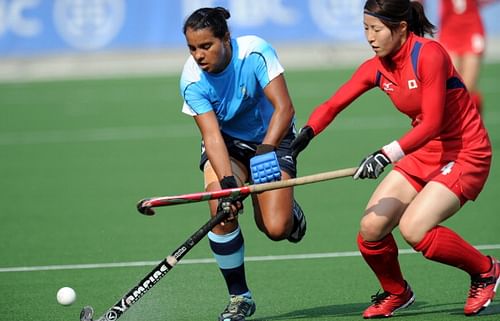
Battling for a new emergence - The anguished stories of Indian sportswomen
Indian society, on one hand, worships Goddesses like Lakshmi, Durga and Kali whereas on the other hand, we hear about a lot of instances of sex related crimes, in sports too. It affects the psyche of Indian women who cannot do justice to their talents due to their embattled state of mind. Do we, the average Indians, truly celebrate the achievements of women athletes?

In the 21st century, granting equal rights to both men and women remains the single most important objective of the policy-makers. India has to shed the disparity between both the sexes if it has to become a developed country. Today, if we have a look at various sectors: political, commerce, music, economics, and army – you name it – Indian women have proven themselves to be at par, if not better, than their male counterparts. Yet, there are various instances reported of female foeticide which is deplorable. The UN report published by Department of Economics and Social Affairs sheds a light on why the lop-sided ratio exists in India and how India is sometimes a graveyard for a girl child.
In India, in the field of sport we have seen stellar performances from women athletes. They have given the international superstars a run for their money and what makes this achievement commendable is the fact that the Indian women do not have the high-class facilities when compared to the infrastructure in place for competitors from other nationalities, especially the ones from the Western countries. In today’s day and age, an Indian woman gets motivated by the achievements of MC Mary Kom, who brought glory to the nation of a billion people by winning a Bronze medal at the 2012 London Olympics. In the badminton circuit Saina Nehwal’s ascent has been magnificent. Her style of play has made the Chinese contingent stand up and take note of her. A Bronze medallist herself at the London Games, Saina’s single-minded determination and on-court brilliance has made her an icon for millions of Indians (including males).
In tennis, Sania Mirza may not have scripted success stories in the Grand Slams, but she is an example of a modern Indian woman who is a fierce competitor and refuses to give up. Mirza’s forehand is top-notch which rattled Serena Williams at the Australian Open in 2008. Mirza lost that match comprehensively but weren’t we proud of Sania’s attitude? She kept trying although it was a herculean task to beat Williams when she was at the peak of her prowess.
The team sports have had their share of stories of unequal treatment being inflicted upon women. First of all let us understand the pressures that women face when they choose to follow a sport professionally. Are the pressures on them different than men, in any way? The bigger question is about their safety. Are women safe from the taunts of the society, the molestation and rapes committed by the coaches? And the biggest question of them all – do women themselves feel at par with men? Quite often, women have been brought up believing that they are inferior to men. This is prevalent in most of the urban and rural parts of the country.
When you think about the reasons why women teams are not recognised much, the answer is simple. It is because they do not win enough. The corporate sponsorship hence eludes them and they do not get many benefits apart from the basic level training. The amount of money they get by representing the country is ludicrously lesser than their male counterparts. These women cannot be expected to only play for pride; they are also there to earn their bread and butter. “Not much has changed since 2006, when I started playing,” Ritu Rani Tindal, the captain of Indian women’s hockey team, told Sports Illustrated India in February 2013.

So, will a woman who quits hockey because she cannot manage expenses be called a traitor? Isn’t it unfair that their male counterparts who came last at the London Olympics are earning big-fat pay cheques thanks to the Hockey India League? We had experts talking about how HIL would resuscitate the state of hockey in the country. But the ladies continued to guffaw sarcastically because not for the first time, they were literally being treated as “second-class sportspersons”.
Recently, former Indian cricketer Diana Edulji too voiced her concerns about Indian women cricketers being treated inferior to men. The venue of the Women’s World Cup matches was shifted from the Wankhede Stadium to the adjoining Brabourne Stadium to accommodate an Irani Trophy match. Besides, the girls often were seen carrying their own kits and walked all the way from Marine Drive to the ground. Isn’t that shameful?
Sexual harassment:
In 2009, six women cricketers complained about sexual harassment against them by the general secretary of Andhra Cricket Association, V. Chamundeshwarinath. In 2010, a hockey player, T.S. Ranjitha Devi accused Coach M.K. Kaushik for passing lewd remarks against her. In the same year, Assamese archers complained of physical abuse against them by their coach. A national level shooter was sexually harassed in Haryana after she returned to her room only to see the in-charge of the mess barging in her room and trying to molest her. There are many more cases that bring ignominy to the country. My blood begins to boil as a sports follower. If the sanctity of the game has to be maintained, we need to respect women or for that matter any sportsperson.
The need of the hour is to protect the women in our country – not just the sportspersons. The monster living inside men who hold women inferior, must be killed. We must all pledge to keep the society free from any fear.
We all want the sport to be remembered for the right reasons and we ought to respect women – their strength, their power and above all, the sacrifices they make. India might just do itself a world of good if it follows the basic tenet of respecting women and letting her express herself fully in the field of sport.
The agonising wait remains for a new dawn.